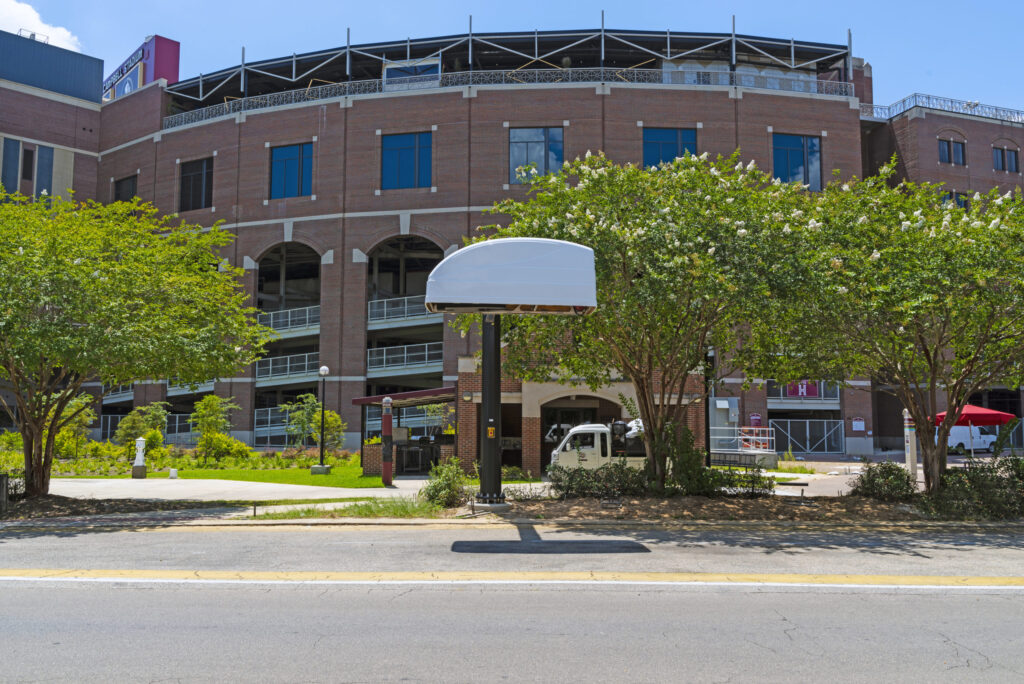In an era of increasing environmental consciousness, college campuses are taking bold steps to embrace sustainability and reduce their carbon footprint.
One of the most innovative and impactful changes universities are making is the electrification of student buses. This transformation serves multiple purposes. One purpose is to switch to a cleaner, more energy-efficient mode of transportation. Another is to create a statement about the commitment of higher education institutions to a greener future.
Florida State University already began laying the groundwork in 2019 when they transitioned to an all-electric bus fleet—setting the example for other universities in embracing a commitment to electrification and a more sustainable future.
The Need for Change — and a Changing Landscape
Electric fleets play a pivotal role in the future of sustainable energy, wielding power to eliminate millions of pounds of carbon emissions, even with a modest initial rollout.
As time progresses, EV fleets can save tens of millions of dollars for entities ranging from corporations and governmental bodies to educational institutions.
In this landscape, the Miller EV Solutions team possesses the experience and knowledge to accelerate the integration of electric fleets for university campuses nationwide.
It all started with FSU — a state university that committed to early adoption and set the standard for universities around the country on creating a more sustainable and energy-efficient campus.
Running a zero-emissions electric bus fleet requires a lot of power. Miller EV Solutions installed two fast-charging stations at FSU campus bus stops and all the necessary infrastructure to operate FSU’s new electric fleet. Their state-of-the-art charging stations can take the 35-foot electric bus from “empty” to 200 miles of range in about 10 minutes.
The Electric Advantage: Benefits of Electrifying Student Buses
Outdated diesel-powered buses have long been the staple of student transportation on college campuses.
Their environmental impact is undeniable, emitting pollutants that contribute to air quality degradation and climate change. In 2021, transit-related activities accounted for 29% of greenhouse gas emissions, as reported by the US Environmental Protection Agency. As hubs of education and progress, college campuses find themselves at the forefront of the battle against these challenges.
The electrification of student buses aligns perfectly with their mission to lead by example and drive meaningful change. This electric advantage goes way beyond transportation, transforming how campuses operate, how students experience their environment, and how communities view higher-education institutions.
Zero Emissions and Improved Air Quality
Hundreds of higher-education establishments nationwide have pledged their dedication to achieving carbon neutrality on their campuses. And one of the most compelling benefits of electric buses is their emission-free operation.
With zero tailpipe emissions, they play a crucial role in reducing the carbon footprint of campuses and surrounding neighborhoods. By eliminating pollutants like nitrogen oxides and particulate matter, electric buses contribute to improved air quality, creating healthier environments for students, faculty, and residents alike. This positive impact on public health aligns seamlessly with the mission of educational institutions to nurture well-being and knowledge.
Noise Reduction and Enhanced Campus Experience
Electric buses operate quietly compared to their diesel counterparts, reducing noise pollution on campus and in neighboring communities. This noise reduction fosters a serene and conducive learning, research, and relaxation environment.
Students can enjoy the tranquility of campus spaces without the disruptive noise often associated with traditional buses, enhancing their overall campus experience.
Cost Savings and Financial Efficiency
While the upfront cost of electric buses may raise eyebrows, their long-term financial benefits quickly come into focus. Electric buses have lower operating and maintenance costs due to fewer moving parts, reduced fluid needs, and simpler engine systems.
Additionally, the energy cost per mile traveled is significantly lower than the cost of diesel fuel. Over time, these savings offset the initial investment and provide valuable resources that campuses can redirect toward other sustainability initiatives and educational programs.
Promoting Sustainability and Image Enhancement
Adopting electric buses sends a powerful message to students, faculty, and the wider community: the campus is committed to sustainability and environmental stewardship.
Colleges and universities become role models in the transition to cleaner transportation, inspiring others to follow suit. This commitment to sustainability enhances the institution’s image and reputation, attracting environmentally conscious students, faculty, and partners who align with the values of the campus.
Overcoming Challenges with Miller EV Solutions: Infrastructure and Implementation
In this dynamic landscape, the Miller EV Solutions team brings a wealth of experience and expertise to swiftly advance the integration of electric fleets for university campuses nationwide. Overcoming these obstacles requires careful planning, collaboration, and innovative solutions.
Charging Infrastructure Development
One of the primary challenges in adopting electric buses is establishing a robust charging infrastructure. College campuses must strategically plan the installation of charging stations to ensure adequate coverage for the entire fleet.
These stations’ location, type, and capacity require careful consideration to optimize accessibility and charging efficiency. Often, a major barrier is space. While a centralized location with a large grouping of chargers would offer the most advantages, it’s not always feasible on university campuses, particularly in older institutions where space is already developed.
Collaborating with Miller EV Solutions allows our team to help campuses navigate the complexities of charging infrastructure development.
Deployment Length and Infrastructure Constraints
The length of deployment for electric bus infrastructure and the need for strategically located charging stations can pose operational challenges. However, Miller EV Solutions worked with FSU to eliminate that pain point by procuring the equipment early into the project and installing two fast-charging stations at different bus stops on campus, allowing the electric bus to fill up their charge in minutes.
Strategic planning using Miller EV Solutions’ route analytics tools can optimize the utilization of electric buses while addressing range limitations — and speed up the installation process to get the project completed on time. Due to space constraints on campuses, identifying suitable locations to ensure the bus fleet can efficiently complete its route relies on that initial time invested in planning during the deployment process.
Financial Investment
The initial investment in electric buses and charging infrastructure can seem daunting. Campuses need to secure funding to purchase electric buses, install charging stations, and potentially upgrade electrical systems to handle the increased demand.
Some universities, however, are exploring funding options outside traditional grants and government incentives. One option might be allowing the public to charge their vehicles on-campus at available EV charging stations.
Another revenue model that might become a trend for campuses is renting out parking spaces and allowing an outside business to invest in the infrastructure in exchange for the proceeds.
Alternate funding options, such as partnerships and sustainability funds, can help alleviate financial burdens and make the transition more attainable.
Integrating Sustainability Policies
Integrating electric buses into the broader sustainability framework of a campus requires alignment with existing policies, goals, and initiatives. Campuses must ensure that the electrification effort complements other sustainability endeavors and contributes to overall carbon reduction targets.
Installing EV charging stations doesn’t always contribute enough to a target goal for the initiative to be meaningful. However, pairing the charger with other green technologies, such as solar canopies, can be combined to create a more sustainable transportation ecosystem for students and staff.
Paving the Way for a Greener Tomorrow
As change spreads from campus to campus, community to community, the electrification movement continues to gain momentum, bringing us closer to a future free from exhaust fumes. In this future, buses hum with the promise of progress, and the concept of sustainability weaves into the very fabric of transportation.
The electric buses you’ll soon see navigating their routes on campuses across the nation carry more than just students; they carry hope, innovation, and the determination to leave a positive mark on the world.
Like FSU, campuses are writing a new chapter—one that accelerates us toward a greener and more sustainable tomorrow.
Get Started Today
Are you interested in driving your sustainability efforts? Power the possibilities with Miller EV Solutions today by filling out our quick and easy form.


